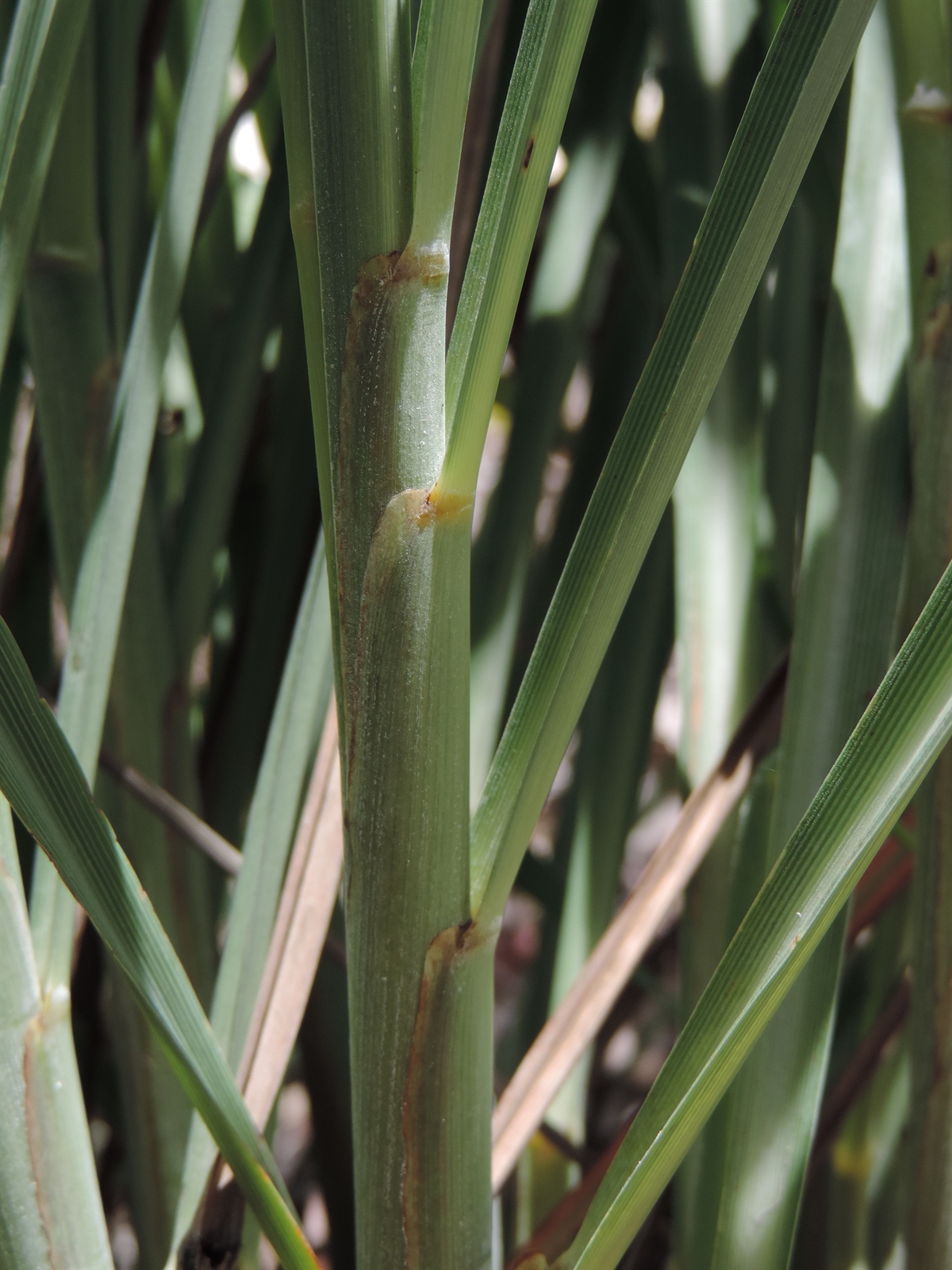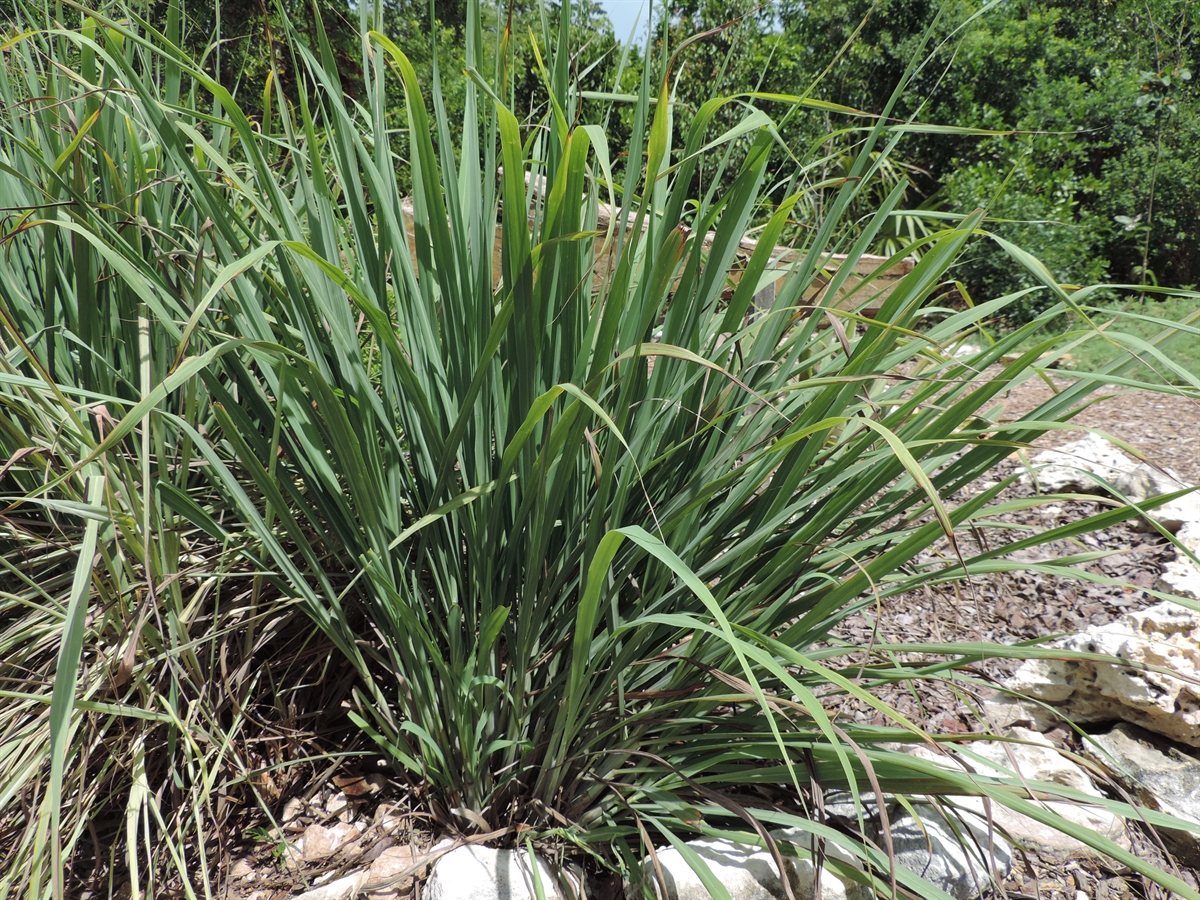Habit: Cymbopogon flexuosus is a perennial growing to 1 meter in height. The parallel- veined leaves are arranged alternately with a sheath extending along the stem with pilose pubescence at the point of divergence. At the point of divergence of the leaf sheath to the leaf blade is a membranous firm ligule. The leaves are to 1 meter in length and have a distinctive citrus odor when crushed.
The zygomorphic flowers are arranged in terminal panicles. The flowers are highly modified without identifiable structures such as the calyx or corolla. Each flowering unit is a spikelet at the base of which are 2 yellow-brown structures called glumes. The spikelets are in pairs. The lower spikelet is pedicellate with the pedicel covered with pubescence, while the upper spikelet is sessile. In each spikelet there are 2 flowering structures each is subtended by 2 additional structures (lemma and palea). The lower unit is fertile and has 3 unfused stamens and a superior ovary with a single locule and seed. The palea of the fertile spikelet has an awn to 8 mm in length. The upper unit is sterile. The fruit is a caryopsis at maturity.
Habitat: Cymbopogon flexuosus grows as a cultivated species in gardens but has occasionally escaped into other Human Altered environments.
Distribution: Cymbopogon flexuosus is NOT native to the Lucayan Archipelago. It is native to Asia but now grows throughout tropical and subtropical zones throughout the entire world.
Medicinal/Cultural/Economic usage: Cymbopogon flexuosus is used medicinally in the Lucayan Archipelago to treat colds and flu and in general strengthening teas.
Elsewhere in the Caribbean it has been used in bath water to prevent poisoning.

